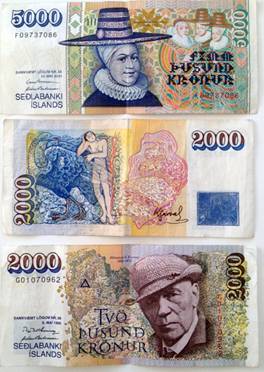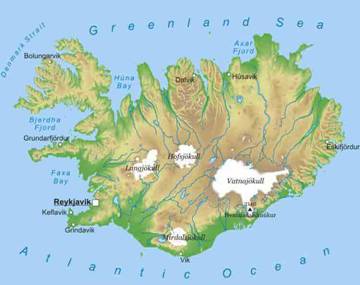|
Hákarl
means shark in Icelandic, but in
Iceland
it means so much more – almost an edible national medal of
honour. The shark in reference is the
Greenland
shark (Somniosus
microcephalus), the northernmost shark species in the
world. The fish is toxic to eat because its flesh is laced
with heavy doses of trimethylamine oxide and urea, a cocktail
that works like antifreeze in the shark’s body, allowing it
to swim in Arctic waters as cold as -2 degrees C. To render it
edible, Icelandic tradition advises burying the shark for at
least two months to let it decompose. This releases the urea
and the flesh begins to break down, after which the meat is
hung up to cure for another four months. The half-year process
makes the shark safe to eat, though safe does not mean good.
Eating hákarl tastes like a lump of chewy, pungent blue cheese chased with
a shot of ammonia….
Iceland
’s national liquor is Brennivin which derives from the Icelandic verb “to burn.” Known
as svarti dauđi (“black
death”), the liquor is distilled from potatoes and caraway
seeds, and is utterly repulsive.
--
Andrew Evans
,
Iceland

Iceland
’s marketing gurus may enjoy painting the nation’s
traditional cuisine as replete with pickled ram’s testicles,
sheep’s heads, putrefied shark, and spiced innards, but
there is food originating from this little island that is
delicious, flavour-packed, and cheap. And I don’t just mean
hot dogs. Skyr is
the quintessential
Iceland
dairy product. Some describe it as thick yoghurt, others as
sour curds. It is high in protein and calcium and very low in
fat (though some add a lot of sugar. Skyr
has been mentioned from as early as the 11th
century…[and] has found its uses into the 20th
century. The last death sentence ever handed down by the
Icelandic courts was in 1914 to a woman who was convicted of
killing her brother by feeding him poisoned skyr.
-- Eliza Reid, ibid.


|